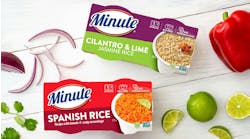The FDA announced in December plans to include acacia -- also known as gum arabic or gum acacia -- as part of the agency's definition of dietary fiber. The action is being taken in response to a citizen petition from Nexira, Alland & Robert and Importers Service Corp.
"With this current notification for gum acacia, 18 categories of non-digestible carbohydrates (including a broad category of mixed plant cell wall fibers) are either included in the definition of dietary fiber, or are non-digestible carbohydrates that the FDA intends to propose to be added to the definition of dietary fiber," the agency wrote.
Before the FDA began regulating fiber, manufacturers determined for themselves what was fiber and could use the term on labels whenever they decided it was appropriate. Eventually, the FDA decided this practice was misleading consumers.
In 2016, the FDA defined dietary fiber by establishing two general classes of fiber: naturally occurring fibers that are "intrinsic and intact" in plants, and "isolated or synthetic non-digestible carbohydrates (with three or more monomeric units) determined by FDA to have physiological effects that are beneficial to human health."
The first category -- plant fiber that is intrinsic and intact -- occurs in foods such as vegetables, whole grains, fruits, cereal bran, flaked cereal and flours. The agency said there already was sufficient evidence that these ingredients "provide beneficial physiological effects to human health."
That initial list was beta-glucan soluble fiber, psyllium husk, cellulose, guar gum, pectin, locust bean gum and hydroxypropylmethylcellulose. Only those could be included as "fiber" on the Nutrition Facts panel.
For other ingredients to be called fiber, petitioners had to prove a "beneficial effect on human health," such as lowering cholesterol or glucose levels, increasing frequency of bowel movements, or improving mineral absorption. A number of ingredients met that criteria in the years since, including: mixed plant cell wall fibers (a broad category that includes fibers like sugar cane fiber and apple fiber, among many others), arabinoxylan, alginate, inulin and inulin-type fructans, high amylose starch (resistant starch 2), galactooligosaccharide, polydextrose and resistant maltodextrin/dextrin.

